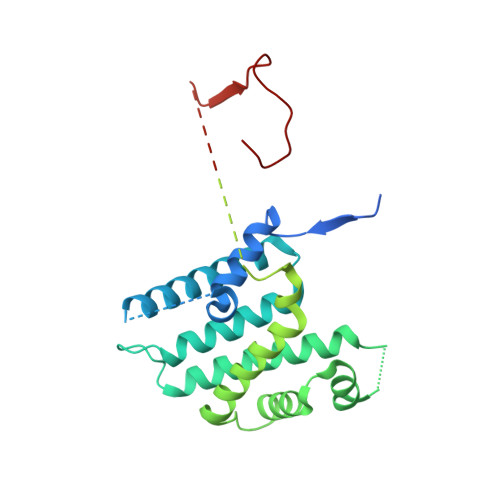Cryo-EM reveals active site coordination within a multienzyme pre-rRNA processing complex.
Pillon, M.C., Hsu, A.L., Krahn, J.M., Williams, J.G., Goslen, K.H., Sobhany, M., Borgnia, M.J., Stanley, R.E.(2019) Nat Struct Mol Biol 26: 830-839
- PubMed: 31488907
- DOI: https://doi.org/10.1038/s41594-019-0289-8
- Primary Citation of Related Structures:
6OF2, 6OF3, 6OF4 - PubMed Abstract:
Ribosome assembly is a complex process reliant on the coordination of trans-acting enzymes to produce functional ribosomal subunits and secure the translational capacity of cells. The endoribonuclease (RNase) Las1 and the polynucleotide kinase (PNK) Grc3 assemble into a multienzyme complex, herein designated RNase PNK, to orchestrate processing of precursor ribosomal RNA (rRNA). RNase PNK belongs to the functionally diverse HEPN nuclease superfamily, whose members rely on distinct cues for nuclease activation. To establish how RNase PNK coordinates its dual enzymatic activities, we solved a series of cryo-EM structures of Chaetomium thermophilum RNase PNK in multiple conformational states. The structures reveal that RNase PNK adopts a butterfly-like architecture, harboring a composite HEPN nuclease active site flanked by discrete RNA kinase sites. We identify two molecular switches that coordinate nuclease and kinase function. Together, our structures and corresponding functional studies establish a new mechanism of HEPN nuclease activation essential for ribosome production.
Organizational Affiliation:
Signal Transduction Laboratory, National Institute of Environmental Health Sciences, National Institutes of Health, Department of Health and Human Services, Research Triangle Park, Durham, NC, USA.

















